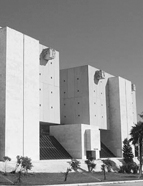

................................
The royal chancellery evolved further, with increasingly intensive and regular activities evident in the volume and diversity of issued documents and their subsequent registration. Once the Crown archive was established in the Torre do Tombo—so named because it housed the deeds of the "tombo" (a term referring to the Recabedo Regni book, or the record of Crown revenues)—the registry books of the chancellery were transferred to the archive once their administrative use ended, usually a few years after the death of the monarchs (P. Azevedo, “Os Livros da chancelaria…” ["The Books of the chancellery"] 1906).
From i ts o rigins to Liberalism: a n e volution in c ontinuity
Originally established to preserve royal documentation, particularly of a fiscal nature, the Torre do Tombo Archive soon began to house other types of records. In addition to original copies of issued documents, the archive , as already mentioned, also stored the chancellery registries and records relating to the so-called “Crown’s own assets,” covering the administration of properties, rents, levies, and royal rights. The chronological limits of this documentation range from 1299 to 1826, forming what later became known as the “primal core of the archive.”
The oldest known reference to the documentary collection of the Torre do Tombo is a letter from the scribe Tomé Lopes to King João III, dated 2 March 1526, detailing the state of the archive and enumerating the documents stored there up to that time (J. Pessanha, “Uma Rehabilitação histórica…” ["A Historical Rehabilitation..."] 1905). Other documents authored by Tomé Lopes (from 1529 and 1532), referred to as emvemtayro , also list the contents of the archive. These texts underscore the archive's significance and the level of security it commanded during that period, as evidenced by monarchs, nobles, and clergy from foreign nations who deposited documents there for safekeeping, thereby recognising their value and ensuring their preservation .
This work is financed by national funds through FCT - Foundation for Science and Technology, I.P, in the scope of the projects UIDB/04311/2020 and UIDP/04311/2020.
